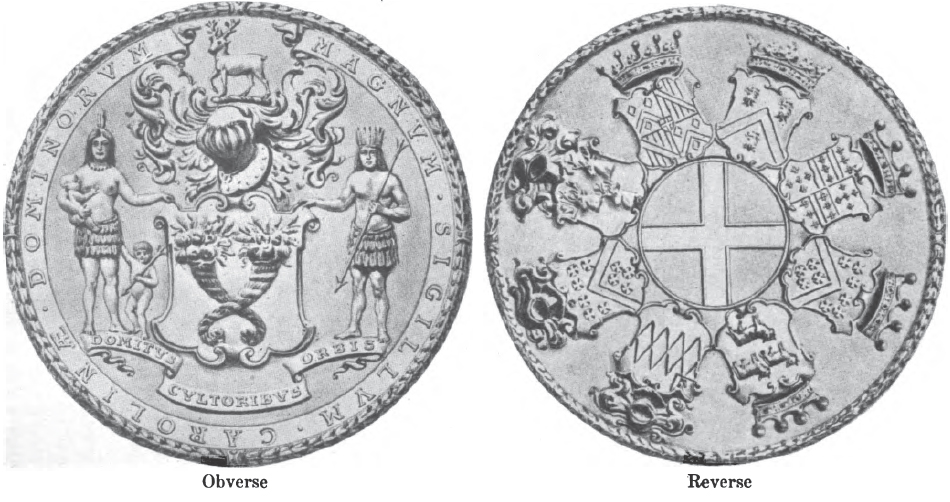The Cravens and Carolina
William, the first Earl Craven, was a loyal supporter of the Stuarts during the English Civil War, and after it in 1663 King Charles II rewarded him in many ways, among other things making him and his successors one of the Lords Proprietors of Carolina.
To find out more about Elizabeth Craven and the Craven family, read:-
Lords Proprietors of Carolina | South Carolina Public Radio | Knowitall ...
https://www.knowitall.org/audio/lords-proprietors-carolina-south-carolina-public-radio
https://www.carolana.com/Carolina/Governors/ccraven.html
William Craven 1st Earl of Craven of the 1st creation
In 1663, King Charles II granted the land that became South and North Carolina to eight English noblemen: the Earl of Clarendon, the Duke of Albemarle, the Earl of Craven, the Earl of Shaftesbury, Sir George Carteret, Sir John Colleton, Baron Berkeley of Stratton, and his brother Sir William Berkeley.
(These Berkeleys were not the ancestors of Elizabeth Craven but a different branch of the family, distantly related.)
Carolina itself was of course named after King Charles II, and the king, or his officials, appointed North Carolina's governor and had the right to approve (or disapprove) its laws. The Lords Proprietors ran the colony and owned valuable estates there. They were supposed to collect taxes from the settlers and organize defence against pirates and Native Americans.
This explains why Charles Craven, a younger son of Lord Craven's cousin Sir William Craven, was made Governor of South Carolina from 1711-1717 at the age of 29. He was prepared to cross the Atlantic and spend six years in the brave new world of America with his wife and children. It seems he acquitted himself well as leader in two battles against the native Americans, one against the Tuscaroras and a second against the Yamahasee. Then he returned to England, where he resided in the manor house at Kintbury, in Berkshire.

The colonists did not have a high opinion of the Lords Proprietors or the effectiveness of their attempts to run things. During Queen Anne's War they were left to fend for themselves and after it an assembly was set up by the Lords Proprietors to allow them to participate in decision making. In 1719 the colonists petitioned the Crown to take over.
In 1729, seven of the eight Lords Proprietors agreed to sell their shares of North Carolina to King George II, and it became a royal colony. So when Elizabeth Berkeley married the sixth Baron Craven in 1766, his family no longer had any links to Carolina. However, there is still a Craven county in South Carolina and a Craven Community College.(These Berkeleys were not the ancestors of Elizabeth Craven but a different branch of the family, distantly related.)
Carolina itself was of course named after King Charles II, and the king, or his officials, appointed North Carolina's governor and had the right to approve (or disapprove) its laws. The Lords Proprietors ran the colony and owned valuable estates there. They were supposed to collect taxes from the settlers and organize defence against pirates and Native Americans.
The eight Lords Proprietor of Carolina.

The early currency of Carolina bore the royal arms of Great Britain on one side and the escutcheons of all eight Lords Proprietors including Lord Craven, on the reverse.
One thing the Lords Proprietors did was commission a detailed map, A New Discription of Carolina By Order of the Lords Proprietors, that was published in England in 1673. It was drawn by intrepid explorers John Ogilby and James Moxon. The colonists did not have a high opinion of the Lords Proprietors or the effectiveness of their attempts to run things. During Queen Anne's War they were left to fend for themselves and after it an assembly was set up by the Lords Proprietors to allow them to participate in decision making. In 1719 the colonists petitioned the Crown to take over.
To find out more about Elizabeth Craven and the Craven family, read:-
Lords Proprietors of Carolina | South Carolina Public Radio | Knowitall ...
https://www.knowitall.org/audio/lords-proprietors-carolina-south-carolina-public-radio
https://www.carolana.com/Carolina/Governors/ccraven.html









Comments
Post a Comment